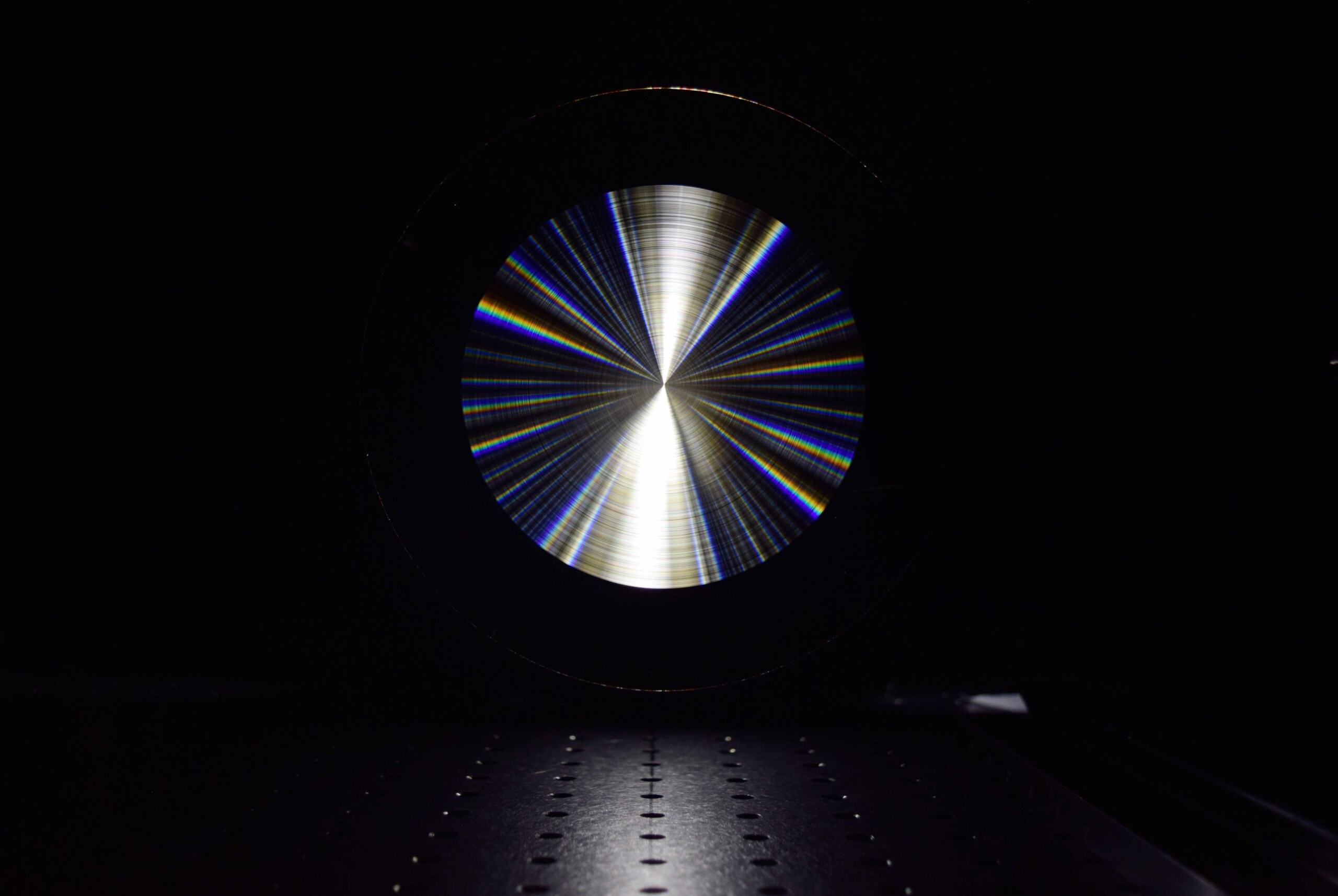For the first time, a flat telescope lens has been produced that represents colors accurately, offering a way to make less bulky lenses that could be sent into space cheaply.
ADVERTISEMENT
The first telescopes used lenses, known as refracting telescopes. Small instruments – whether for amateur astronomers starting out or people keen to look at distant mountains or spy on their neighbors – are still mostly made that way. However, most larger instruments – from backyard scopes for the more serious amateur to giant mountain-top tools to explore the universe – now adopt Newton’s method of curving mirrors (reflectors) instead.
That’s because, as lenses become wider to catch more light, they also become bulkier. Between the costs of all that glass and the challenges of holding and transporting the weight, telescopes with lenses are usually too expensive and inconvenient above quite a small size. Professor Rajesh Menon of the University of Utah leads a team that may have a way to change that, at least for space-based instruments.
Traditional refracting lenses use their curvature to bend light. The world-changing insight that inspired the telescope was that two lenses in succession could be used to create enlarged images of distant objects. The wider the lens, the more light it captures, enabling us to see things too faint for the eye alone; while a thicker lens allows greater light-bending, increasing magnification.
Besides refraction and reflection, light can have its path changed through diffraction, which means there is a third way to focus an image. For example, Fresnel zone plates (FZPs) focus with diffracting concentric ridges, but the color output is highly distorted.
Ordinary lenses refract different colors at slightly different angles, producing rings of color around images, but FZPs are far worse in this regard, only effectively magnifying the wavelength they are optimized for. Color tells us so much about the nature of the object we are observing that this is a major problem, far beyond the loss of pretty images. Although one diffractive lens is in use for astronomy, it only works effectively for orange and red light, imposing great limitations.
Menon and co-authors patterned 20,000 diffracting rings on a glass wafer in a way that allows a range of wavelengths to be magnified together. The rings have separations smaller than the wavelengths they bend and need near-perfect positioning, but advances in fine manufacturing make this much more viable than it used to be. Light plays on the lens, producing colors like those on a CD, which is not surprising since those also have rings thin enough to produce diffracted light, although not in such precise ways.

Light bouncing off the surface of the lens produces a rainbow of colors like a CD, but with much higher precision.
Image Credit: Menon Lab, University of Utah
“Simulating the performance of these lenses over a very large bandwidth, from visible to near-infrared, involved solving complex computational problems involving very large datasets,” lead author Dr Apratim Majumder of the University of Utah said in a statement.
The team demonstrated the viability of the approach using a 100-millimeter (4-inch) diameter lens – just at the point where reflectors tend to take over from refractors in the home market – and took images of the Sun and Moon. Crucially, while mounted on thicker backing, the diffraction is achieved with rings at most 2.4 μm high, much thinner than a human hair. “Once we optimized the design of the lens’ microstructures, the manufacturing process involved required very stringent process control and environmental stability,” Majumder said.
The lens demonstrated its suitability for all visible wavelengths other than the deepest violet, and even slightly into the infrared.
However, the team has much bigger ambitions. “Our demonstration is a stepping stone towards creating very large aperture lightweight flat lenses with the capability of capturing full-color images for use in air-and-space-based telescopes,” Majumder said.
ADVERTISEMENT
Every gram matters when sending objects into space, while telescopes flown aboard balloons or aircraft need to be compact. Although reflecting telescopes can be much lighter than similar-sized refractors, they still get very heavy at large sizes. Moreover, distortions created by the secondary mirror or imperfections in the primary mean they have drawbacks of their own, which these diffracting lenses may avoid.
“If successful, these flat lenses could lead to simpler, cheaper airborne and space-based imaging systems for astronomy and Earth observation,” Menon said in an accompanying article.
He told IFLScience the team are; “Working on larger flat lenses. I believe they will become feasible, but it will take time before we can get the manufacturing cost to be much cheaper than that of mirrors,” making these lenses competitive for amateur astronomers. However, Menon added, “But of course I could be very wrong.”
The paper is published in the journal Applied Physics Letters.
Source Link: Scientists Create First Flat Telescope Lens That Doesn’t Distort Colors